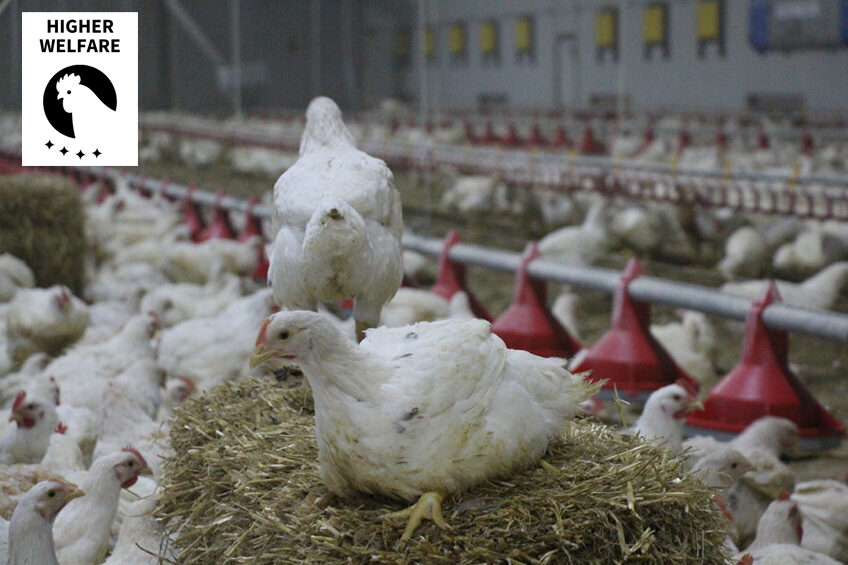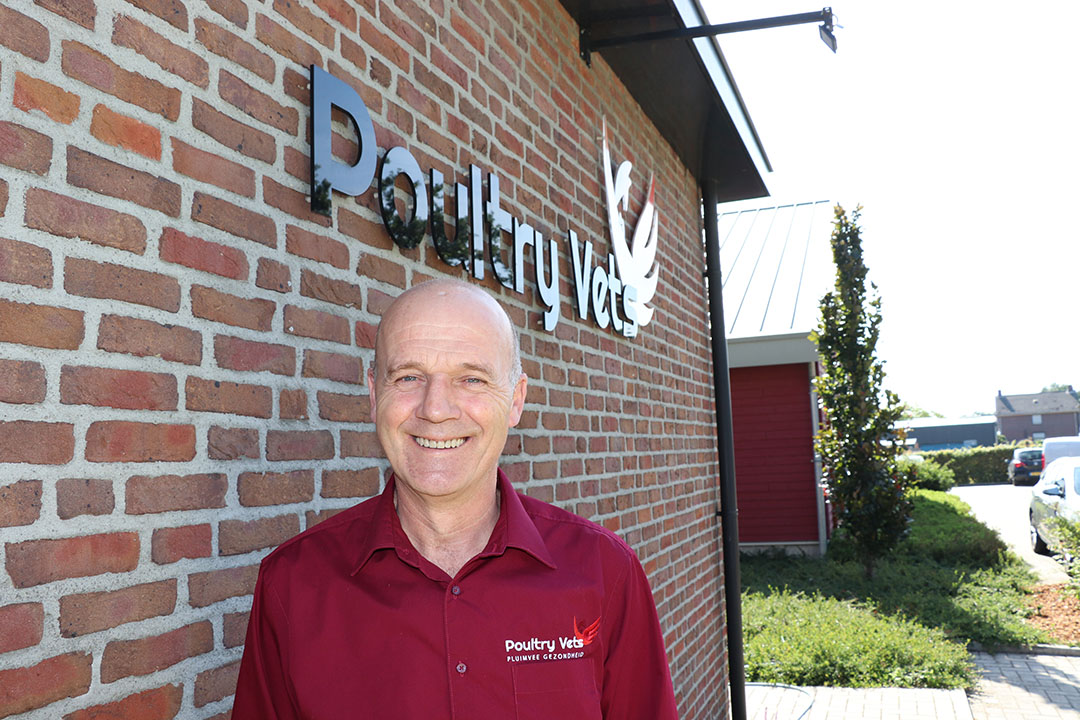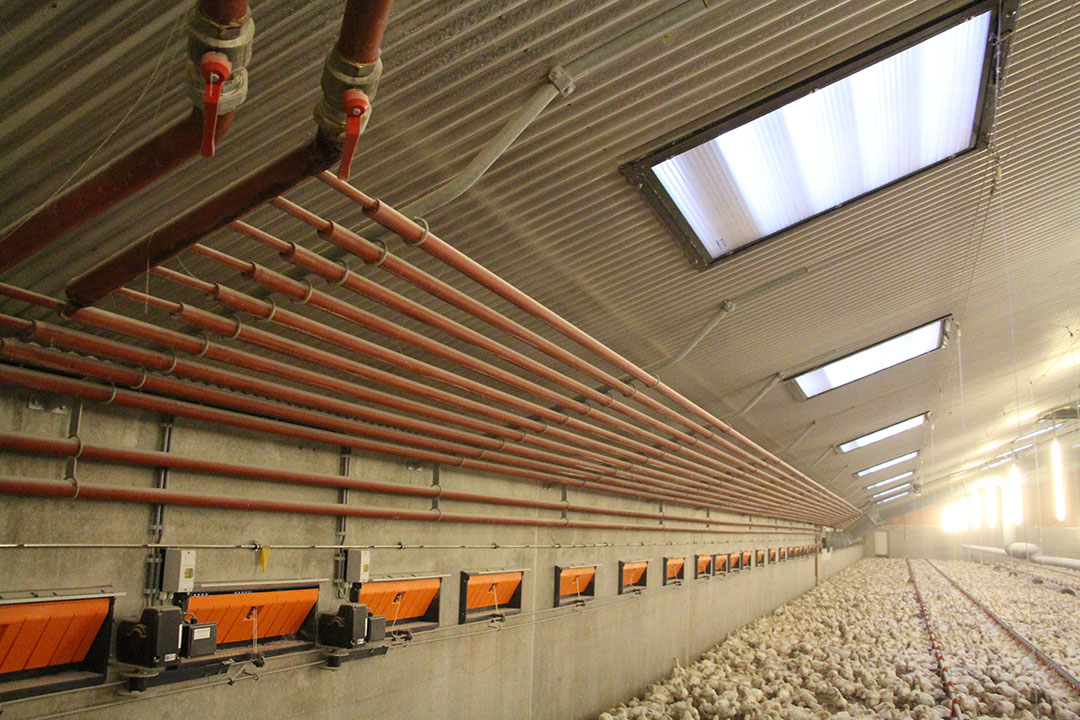‘Distinguish real from perceived welfare’

The Better Chicken Commitment is currently the biggest factor influencing welfare improvements in broiler production. Dutch poultry veterinarian, Albert Vink, sees advantages and drawbacks: “The people who drew up the light intensity requirement of 50 lux really don’t understand bird behaviour and needs.”
The Better Chicken Commitment basically consists of 5 on-farm requirements designed to increase animal welfare. As of 2026, under the Better Chicken Commitment, these requirements will be a maximum stocking density of 30 kg live weight per square metre, the use of breeds that demonstrate higher welfare outcomes, lighting levels in houses of at least 50 lux, natural light, at least 2 metres of usable perch space and 2 pecking substrates per 1,000 birds, while the use of thinning is ‘discouraged’.
Poultry veterinarian, Albert Vink of Poultry Vets, notes there are a few misconceptions. “One of them achieves the downright opposite of a welfare improvement for chickens and that is the rule about light intensity in the house.”
Adjust rule ≥50 lux
Currently, the mandatory minimum light intensity in many poultry sheds in Europe is 20 lux. One of the Better Chicken Commitment requirements is that this should be changed to a minimum of ≥50 lux. “As vets, we see that chickens already seek darker areas, under 20 lux and above. You see that they flock towards the walls of the house. In terms of animal behaviour, this translates into ‘fleeing’ from the light,” said Vink. And that makes sense, says the Dutch vet, because chickens are fowl species that originated from the jungle in Asia and therefore lived in a shady environment.
The Dutch vet gives an example of a broiler farmer who asked his advice on how to solve the problem of his broilers drumming along the walls. The disadvantage of this is that they crawl on top of each other which also causes welfare problems such as skin damage and the like.

Vink advised this poultry farmer to lower the light intensity. “And this had a direct effect on the animals,” he says. “They immediately spread out nicely over the entire floor space. So I want to call on those who have drawn up this rule of: ‘at a minimum 8 hours of continuous light (≥50 lux)’ to adjust it. I also don’t understand how they arrived at that 50 lux, because anyone with an understanding of fowl species would never have suggested this.”
For humans, 50 lux may be pleasant, but every animal has its own preference for light intensities. Vink says that a maximum of 20 lux is an excellent standard for poultry species.
Density
From his clientele in the Netherlands with slow-growing broilers, the veterinarian does see the welfare advantages of a lower stocking density. Vink notes that the problem of footpad lesions will become less worldwide as stocking density and the growth rate of the animals decreases.
“If fewer birds are pushed less hard, intestinal problems will be reduced and overall litter quality will be better. Obviously, the basic management must remain at the same level, so in all cases the bedding must be prevented from getting wet. There should be no leaking nipples or other water supplies leaking in the house, for example, and ventilation should be maintained at the prescribed levels.”
Fewer birds per square metre does come at a cost, however. “It’s a given fact that if you slow down the growth rate by placing slow-growing broilers and then also reduce the actual number of birds, your heating costs per bird will be a lot more. Fast-growing broilers that are relatively close to each other give off a lot of heat, so your heating costs will be less,” he noted.
Slow-growing broilers are also less energy efficient, so you need a lot more feed to get the same number of kilogrammes of meat. The carbon footprint is therefore less favourable. The Dutch vet notes that there are more and more sustainable poultry houses in use in the EU, but the common practice worldwide is that most broiler sheds have to be heated.
Higher cost price compensation
Vink states that an increase in the welfare of broilers worldwide represents a huge cost price increase for broiler farmers. “It almost requires a different revenue model,” he says. Some costs are once-off investments, such as the installation of windows and perches.
“In the Netherlands, broiler farmers who produce for McDonald’s already have to have perches installed. Some even had perches installed over the entire length of the house and therefore exceed the 2 metres per 1,000 animals that the Better Chicken Commitment talks about,” (measure from 2026) said Vink.

Going the extra mile on perches doesn’t cost that much, it’s the day-to-day running costs that add up, he noted. “The sharp reduction in stocking density to a maximum of 30 kg/sqm, especially, makes a huge difference in the cost price of a broiler. The success of higher welfare broilers depends on whether the market will compensate the farmer for these costs.”
Vink sees decent compensation in the Netherlands and some other EU countries, but questions the likelihood of worldwide adoption. “Welfare resonates well in California in the United States and other high consumer income markets, but not everywhere in the world, especially when it comes to paying for it,” he highlighted.
“Moving forward, we must keep an eye on the real improvements in welfare versus perceived welfare effects in terms of on-farm performance and an honest narrative towards consumers.”
Join 31,000+ subscribers
Subscribe to our newsletter to stay updated about all the need-to-know content in the poultry sector, three times a week. Beheer
Beheer











 WP Admin
WP Admin  Bewerk bericht
Bewerk bericht